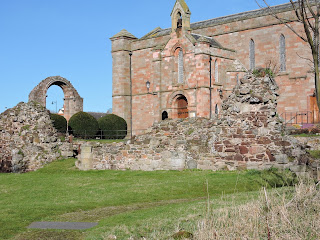The dew as diamondis did hing
Upon the tender twistis, and ying
Ouir-twinkling all the treis
And ay quair flowris flourischit faire
Thair suddainly I saw repaire
In swarmes, the sounding beis
Sum sweitly hes the hony socht *
The equinox has come and gone with the expected gales
amounting to no more than a stiff breeze.
All the wind managed was to blow over the recycling bin and
scatter its contents. Could chase the
empty plastic bottle down the street ever become the latest fitness fad ?
The weather, since day and night synchronised and we
officially entered Spring, has been mild enough to tempt out the solitary bees
and the hibernating butterflies; peacocks, red admirals and tortoiseshells have
all been dancing in the sunlight.
The garden birds are
in full song and the spring flowers are bursting forth.
Too much too soon?
 |
| Wood anemone and Butter-bur |
The blackthorn bushes look like snow drifts with the white
blossoms on the bare branches. A ready source of nectar for the hungry bees and
the promise of a heavy crop of sloes for the gin infusers later in the year.
 |
| Red -tailed bee on Blackthorn |
Beware!
The "blackthorn winter" can quickly follow when
March must repay the "borrowed days" and rain, sleet and even snow
can blight the blossoms and freeze the precocious, presumptive flowering.
Maybe that's why sloes are such an erratic crop. Some years
the bushes are laden, the next they have only the occasional berry.
Let's hope this year is one of plenty.
*The Cherrie and the Slae
Alexander Montgomery (c1545 - c1610)








